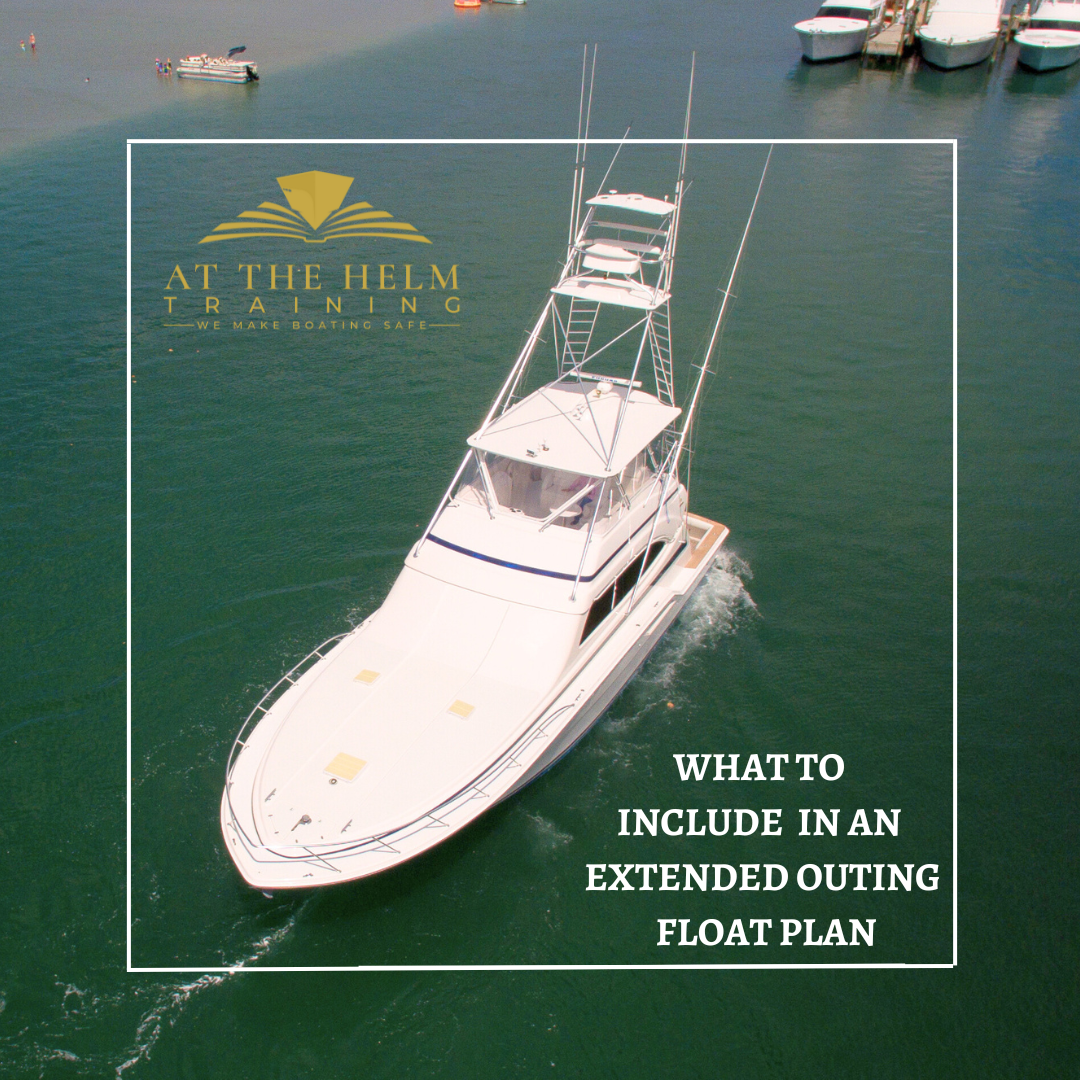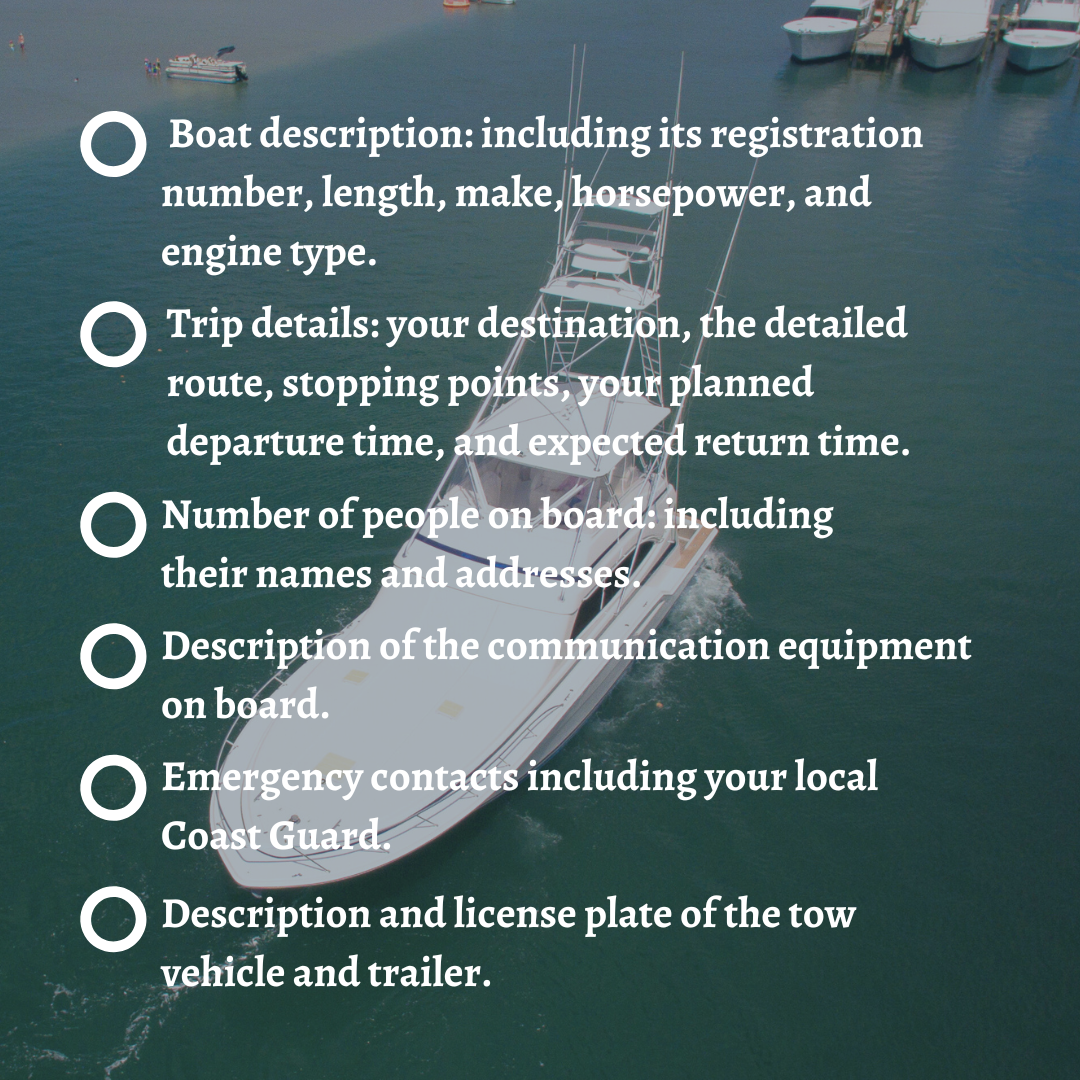7 Tips for Preparing Your Boat for the Fall Season
As autumn rolls in, boating enters a new phase. The crisp air and changing leaves make fall outings a delight, but cooler weather also brings unique...
2 min read
Sophia Palmeri : Jul 26, 2023 12:38:34 PM
.png)
Embarking on an extended boat outing is an exhilarating adventure, offering the promise of new horizons and unforgettable experiences. However, safety should always remain your top priority. One crucial step to ensure your well-being and peace of mind is filing an extended outing float plan. This proactive measure is a cornerstone of responsible boating, and it’s a practice strongly emphasized by our team of experienced boaters. At The Helm Training is committed to keeping boaters safe and prepared.
In this comprehensive guide, we’ll walk you through the process of creating a detailed float plan that covers all the essential information for a safe and enjoyable journey. Let’s dive in!


An extended outing float plan is a written document that outlines your trip itinerary, vital contact information, and other essential details. Filing a float plan for extended boat outings ensures safety and peace of mind for you and your loved ones. By providing the essential information about your trip, such as your departure and arrival times, route, and emergency contacts, you're equipping search and rescue teams with crucial details in case of unforeseen events.
Start by gathering all the necessary information for your float plan. This includes details about your vessel, crew, trip itinerary, and emergency contacts. Key information to include:
Provide a detailed overview of your trip itinerary, including planned activities, expected duration at each stop, and possible alternate routes or locations. Be sure to outline specific contingency plans for scenarios such as adverse weather conditions, mechanical issues, or unexpected delays.
Additionally, include safety measures in your float plan, such as the availability of life jackets, emergency supplies, and strategies to address risks like cold water immersion. Cold water immersion can rapidly lead to hypothermia, so it’s vital to plan for quick recovery and prevention measures, especially in cooler climates or seasons. Clearly communicate all safety precautions and contingency plans in your float plan to ensure everyone is prepared for a safe journey.
Outline your communication procedures while on your extended outing. Include the type of communication devices you will use (VHF radio, satellite phone, cell phone, etc.) and the channels or frequencies to monitor. Specify the expected frequency and timing of check-ins with your emergency contacts. Emphasize the importance of regular communication to ensure your safety.
Detail the steps you want to be taken in case of an emergency. This should include procedures for contacting emergency services, activating distress signals, and executing your contingency plans. Include relevant safety equipment onboard, such as life jackets, flares, fire extinguishers, and first-aid kits.
Share your float plan with trusted individuals who are not accompanying you on the trip. Provide them with a copy of the plan and instruct them on what to do in case of no communication or if you fail to return as planned.
Taking the time to create and file a detailed float plan is a small effort that can make a significant difference in ensuring a safe and enjoyable boating adventure. By preparing thoroughly and sharing your plan with trusted contacts, you’re not only safeguarding your journey but also promoting responsible boating practices. With guidance from At The Helm Training's experienced captains, you can enhance your preparedness and confidence on the water, learning essential safety techniques and best practices for every trip.
Remember, a well-prepared boater is a safer boater. Here’s to smooth sailing and peace of mind on all your adventures!
%20(1).png)
As autumn rolls in, boating enters a new phase. The crisp air and changing leaves make fall outings a delight, but cooler weather also brings unique...
.png)
Navigating the waters during limited daylight can be both thrilling and challenging. Whether you're setting out on an early morning fishing...
%20(1).png)
Owning a yacht is a dream come true for many, but ensuring that your vessel reaches its intended destination safely—whether across the U.S., the...
.png)
Ah, the summer season—perfect for embracing the refreshing waters and boating adventures. But before you set sail, it's crucial to prioritize your ...
%20(1).png)
Fall boating season is one of the best times to enjoy peaceful, scenic waterways. However, minimizing your typical boating accidents are not the only...
%20(1).png)
As autumn rolls in, boating enters a new phase. The crisp air and changing leaves make fall outings a delight, but cooler weather also brings unique...